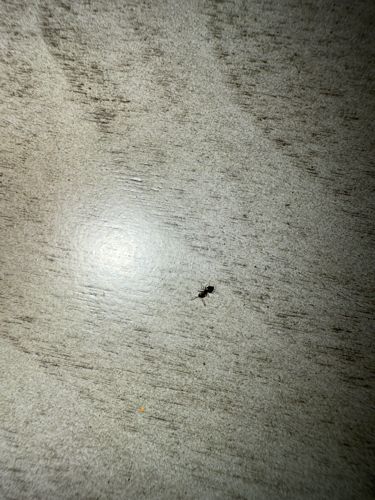Ant
Scientific Name: Various species within Formicidae, common household ants include species like Lasius niger (common black garden ant), Tetramorium caespitum (pavement ant), or Tapinoma sessile (odorous house ant). Without clearer morphological details, a precise species cannot be identified.
Order & Family: Order: Hymenoptera, Family: Formicidae
Size: Typically from 2 mm to 25 mm (smaller species, like those often found indoors, are usually in the lower end of this range).

Natural Habitat
Ants are found almost everywhere on Earth, often constructing nests underground, in wood, or under rocks. Inside homes, they can nest in walls, under floors, or in damp areas.
Diet & Feeding
Ants are omnivorous and their diet varies greatly by species. Many consume sweets, fats, proteins, other insects (live or dead), and plant matter. Household ants are often attracted to human food scraps.
Behavior Patterns
Ants are highly social insects that live in colonies. They communicate through chemical signals (pheromones) and touch. They exhibit complex behaviors such as foraging, nest building, and defense. Most common ants seen in homes are worker ants foraging for food to bring back to the colony. They often follow scent trails.
Risks & Benefits
Risks: Some species can contaminate food, damage wooden structures (e.g., carpenter ants), or deliver painful bites/stings (e.g., fire ants). Benefits: Ants play a crucial role in ecosystems as decomposers, aerating soil, predating on other insects, and dispersing seeds.
Identified on: 8/22/2025